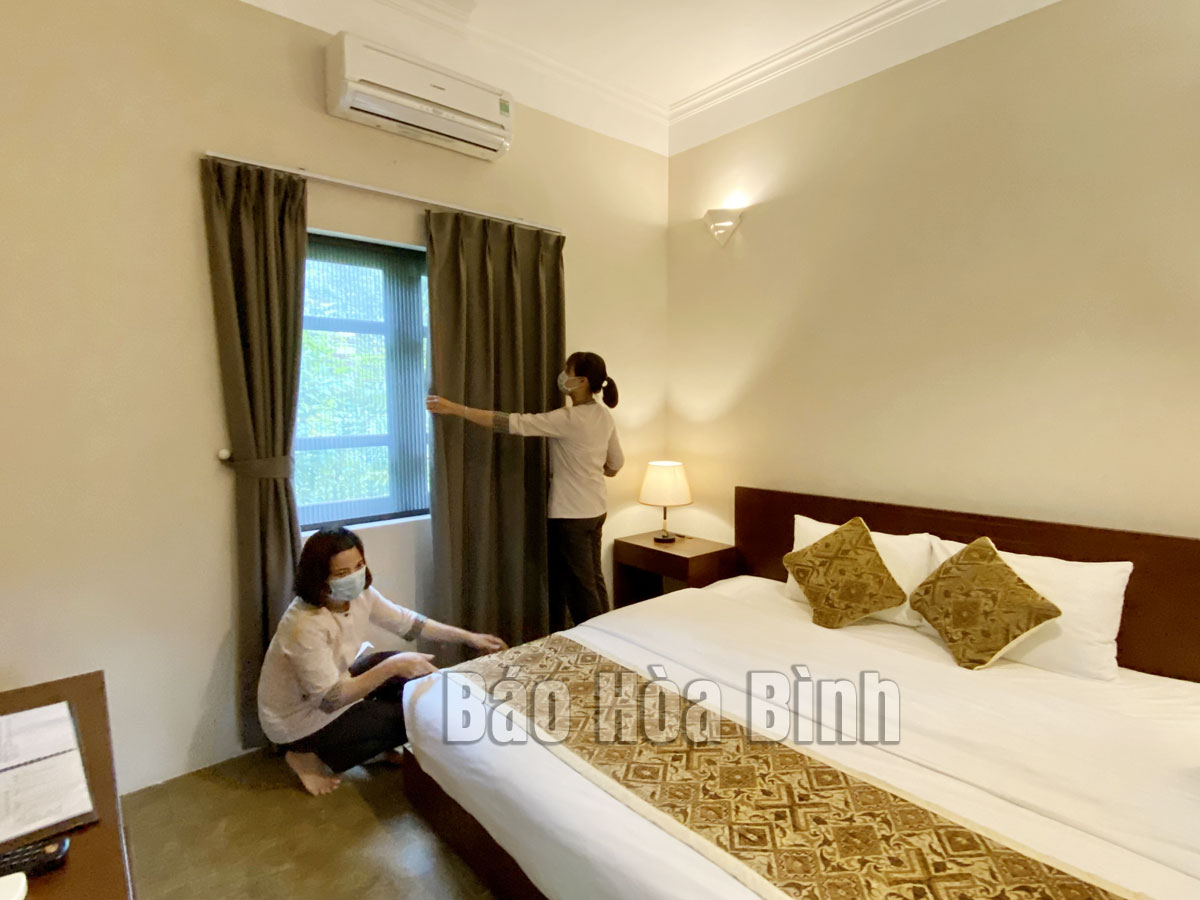
(HBO) - In order to ensure the implementation of the dual goals of COVID-19 prevention and control and socio-economic development, a number of tourist areas and attractions in Hoa Binh province are preparing to reopen, mainly serving local visitors.
Serena Resort Kim Boi (Kim Boi district) prepares conditions to ensure pandemic
prevention and health safety to serve tourists in the province.
After the pandemic situation showed positive
signs in provinces and cities across the country and some localities are
loosening social distancing measures, Serena Resort Kim Boi has launched a
welcome programme to call for tourists to come to the site for hot mineral
baths.
Luu Dinh Tien, executive director of the tourist
site said that the site has prepared all necessary conditions to welcome
visitors, and at the same time adhere to pandemic prevention and control
regulations. The tourist site only accepts adults with "vaccine passports” and
children under 12 years old. Along with local tourists, Serena Resort Kim Boi
also opens its door to those from outside the province who get full two shots
of vaccine and have the negative result of a rapid antigen test performed
within 72 hours.
Mai Chau Lodge resort in Mai Chau town (Mai
Chau) has just launched a special promotion programme called "Finding
peace amidst COVID-19" exclusively for families in Hoa Binh. The programme
is applied to families including two adults, two children under 12 years old
and visitors who are eligible to stay in accordance with provincial
regulations. Previously, the price of each luxury room was 1.7 million VND per
night for two adults and two children, while in the promotion programme, the
room price is reduced to 899,000 VND and one set of special food for the whole
family is offered as well.
Currently, as tourists outside the province are
still hesitant to travel, promoting tourism within the province is in
accordance with the trend of boosting tourism in association with ensuring
safety against COVID-19. According to Bui Xuan Truong, Deputy Director of the
provincial Department of Culture, Sports and Tourism, in the context that the
pandemic is put under control in the province and is abating in localities
nationwide, tourist areas and attractions begin welcoming visitors, with focus
on those who are living and working in the province, and are fully vaccinated.
The reopening of tourism activities helps local tourists experience services
with many incentives right where they live.
The local tourism industry has directed units,
enterprises, organizations and individuals doing business in tourism to
strictly implement pandemic prevention and control measures, and ensure service
quality and interests for tourists./.
A diverse chain of eco-tourism and resort destinations concentrated in Hoa Binh city and the districts of Tan Lac, Da Bac, and Luong Son… Along with the launch of several key high-quality resort tourism projects, these developments have reshaped the landscape and enhanced the appeal of Hoa Binh as a travel destination.
Boasting diverse terrain, a mild climate, and rich natural resources, Cao Phong district is increasingly asserting its place on Vietnam’s tourism map, attracting both domestic and foreign visitors. The district is renowned for its stunning landscapes, majestic mountains, a crystal-clear hydropower lake, and the unique cultural identity of local ethnic groups.
With its pristine landscapes, unique cultural heritage of Muong ethnic minority, and an expanding range of visitor experiences, Tan Lac district of Hoa Binh has fast become a captivating destination for both domestic and international tourists.
Until now, Sung village in Cao Son commune, Da Bac district remains the only Dao ethnic community in Hoa Binh province to develop a community-based tourism model. Beyond its untouched natural landscapes, cultural identity serves as the cornerstone attraction for visitors.
Alongside the diverse cultural identities of the Kinh, Muong, Tay, Thai, Dao, and Mong ethnic people, Hoa Binh province is also renowned as the "capital" of the northwestern Vietnamese cuisine, offering unique and distinctive dishes. At festivals, during Lunar New Year (Tet), or on significant family or community occasions, special dishes are prepared, leaving a lasting impression on visitors.
A Phong Linh (Yellow Tabebuia) flower garden in Thang village, Thach Yen commune, Cao Phong district is currently in full bloom, drawing a large number of visitors.



